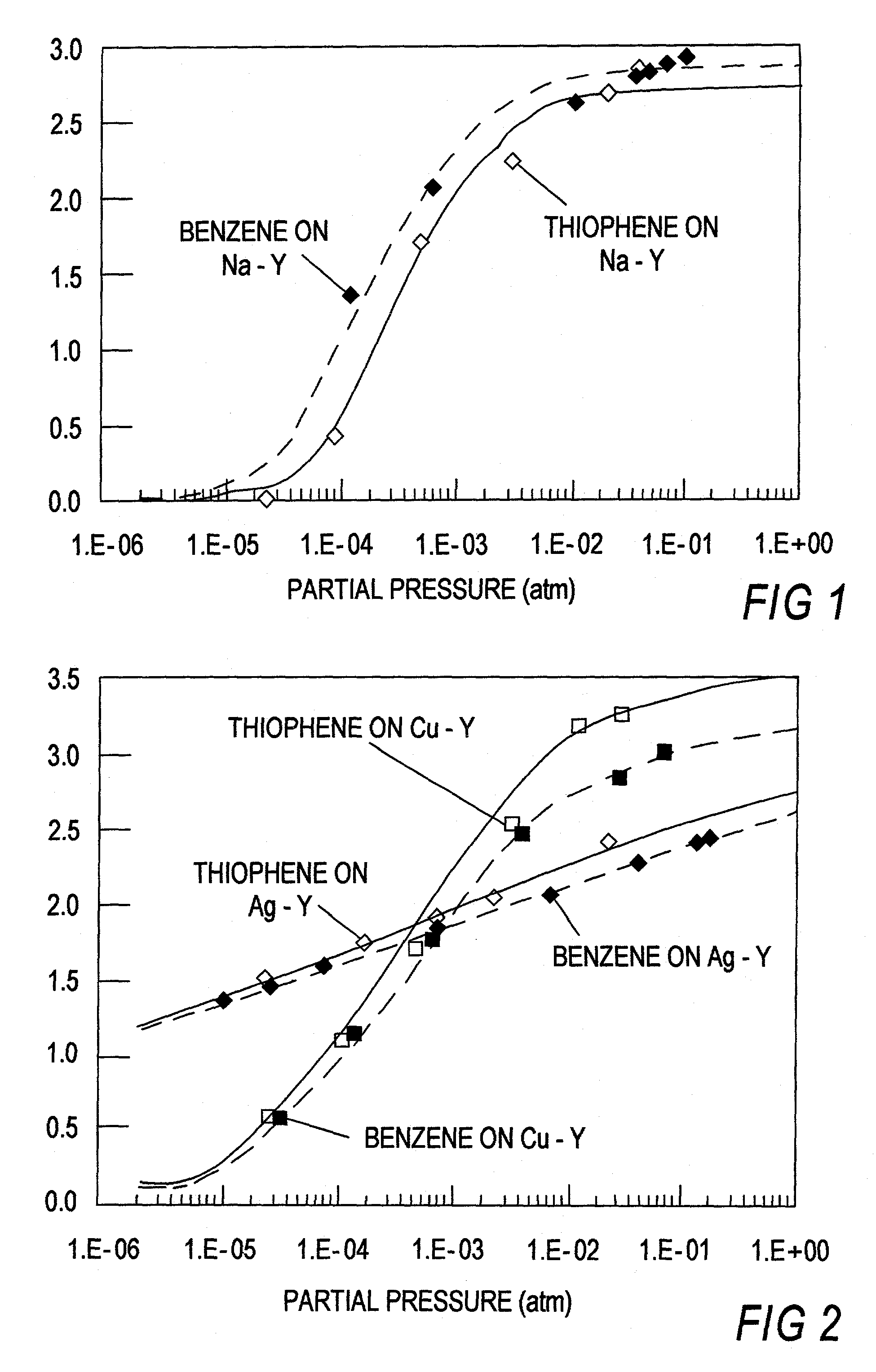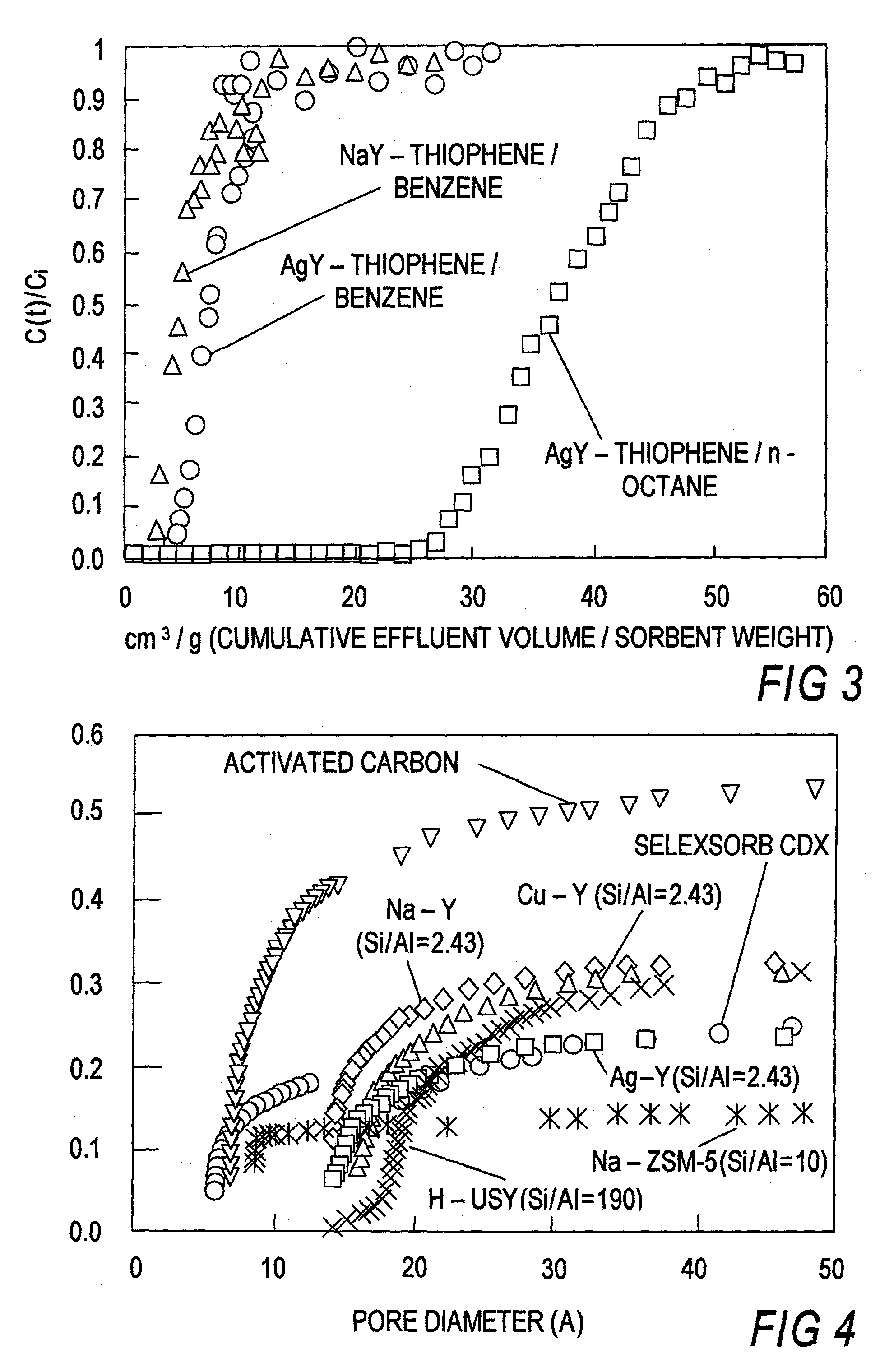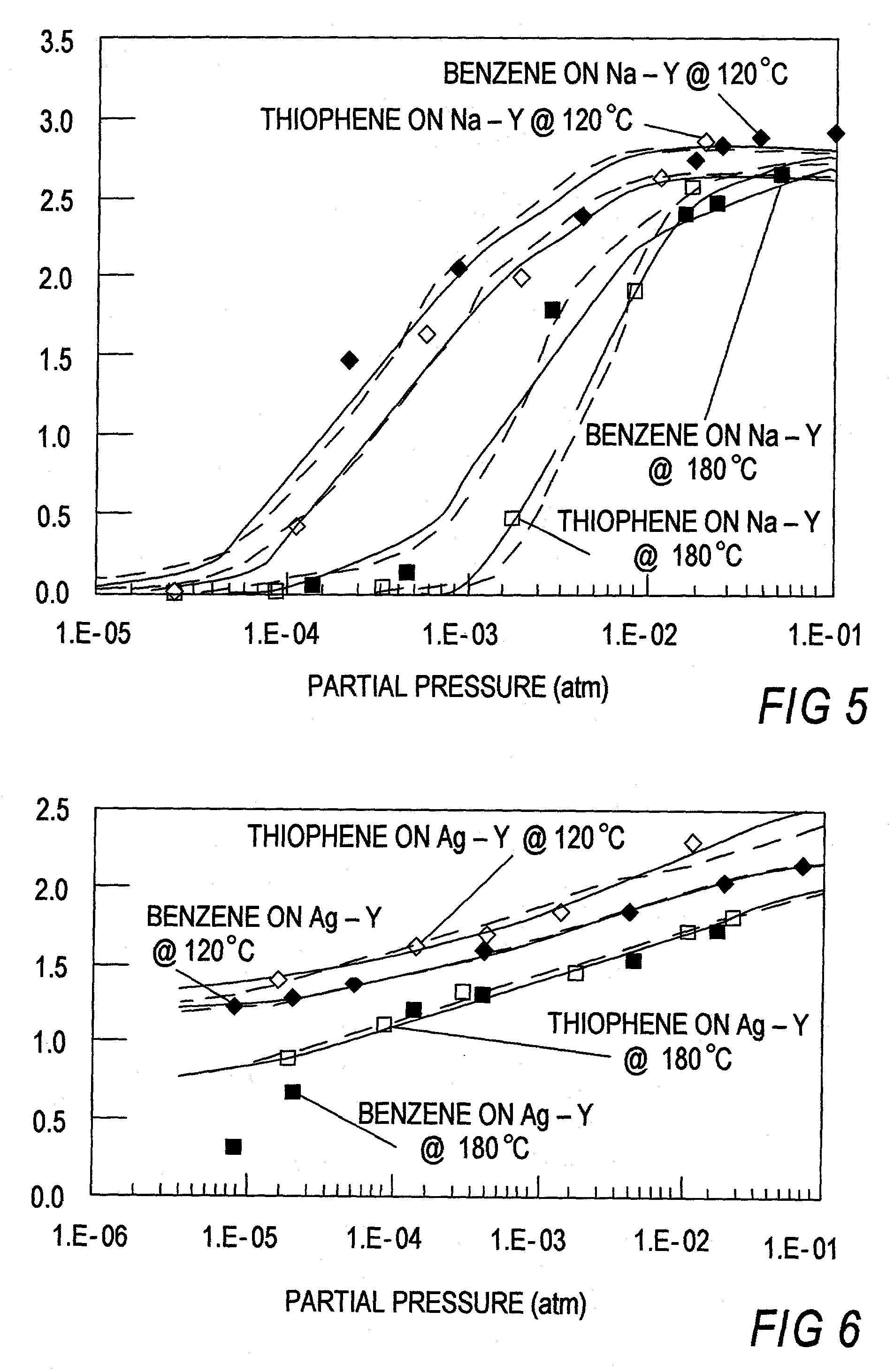Selective sorbents for purification of hydrocartons
a sorbent and hydrocarpton technology, applied in the field of hydrocarbon purification processes, can solve the problems of less effective such as thiophenes and thiophene compounds/derivatives, and reduce the efficiency of heterocyclic diunsaturated sulfur compounds, reducing the production cost of on-board production,
- Summary
- Abstract
- Description
- Claims
- Application Information
AI Technical Summary
Benefits of technology
Problems solved by technology
Method used
Image
Examples
experiment a
Sorbent Preparation
[0065]Cu+—Y was prepared by ion exchange of Na—Y zeolites (Si / Al=2.43, 56 Al atoms / u.c., Strem Chemical) with Cu(NO3)2 followed by reduction of Cu2+ to Cu+, since Cu(I) is not soluble in water. First, as-received Na—Y was exchanged twice using excess amounts (10-fold cation-exchange-capacity (CEC) assuming that one Cu2+ compensates two aluminum sites) of 0.5 M Cu(NO3)2 at room temperature for 24 hours. After the exchange, the zeolite suspension was filtered and washed with copious amount of de-ionized water. The product was dried at 100° C. overnight. Several groups have reported reduction of Cu2+ to Cu+ in zeolite in He (i.e., auto-reduction, see Takahashi, A.; Yang, R. T.; Munson, C. L.; Chinn, D. “Cu(I)—Y Zeolite as a Superior Adsorbent for Diene / Olefin Separation,”Langmuir, 2001; and Larsen, S. C.; Aylor, A.; Bell, A. T.; Reimer, J. A. “Electron Paramagnetic Resonance Studies of Copper Ion-Exchanged ZSM-5, ” J. Phys. Chem., 1994, 98, 11533). In this study, red...
experiment b
Thiophene Removal Using Sodium and Silver Cation in Faujasite Zeolites
[0084]Work has been done on different adsorbents to remove sulfur from mixtures, such as, for example, thiophene from benzene or n-octane based solutions. These adsorbents include sodium and silver forms of faujasite type zeolites, particularly, Y type zeolites. Initial studies were done for the case of an inlet concentration of 2000 ppmw of thiophene in either benzene or n-octane.
Sorbent Preparation
[0085]Sodium Y Zeolite powder was obtained from Strem Chemicals. Silver Y Zeolite was obtained by ion exchanging NaY at room temperature. The solution was prepared using a silver nitrate salt and deionized water (˜0.2 M). A 4-fold excess amount of silver was used to ensure exchange completion. After ion exchanging for 48 hours, the adsorbent was recovered by filtration and washed with large amounts of deionized water. Drying was performed at room temperature.
Breakthrough Experiments
[0086]Breakthrough experiments were p...
experiment c
[0090]In this experiment, the known commercial sorbents such as Na—Y, Na-ZSM5, H-USY, activated carbon and activated alumina (Alcoa Selexsorb) were included, and a direct comparison was made with Cu—Y and Ag—Y which were the sorbents with π-complexation capability. Thiophene and benzene were used as the model system for desulfurization.
Sorbent Preparation
[0091]Various kinds of sorbents were investigated in this work. Four as-received sorbents: Na-type Y-zeolite (Na—Y, Si / Al=2.43, 56 Al atoms / unit cell, Strem Chemical), H-type ultra-stable Y-zeolite (H-USY, Si / Al=195, 0.98 Al atoms / u.c., HSZ-390HUA, TOSOH Corporation), activated carbon (Type PCB, Calgon Carbon Corporation) and modified activated alumina (Selexsorb CDX, Alcoa Industrial Chemical), were used in this study. According to the product datasheets, Selexsorb CDX is formulated for adsorption of sulfur-based molecules, nitrogen-based molecules, and oxygenated hydrocarbon molecules. Na—Y and H-USY were in powder form (binderles...
PUM
 Login to View More
Login to View More Abstract
Description
Claims
Application Information
 Login to View More
Login to View More - R&D
- Intellectual Property
- Life Sciences
- Materials
- Tech Scout
- Unparalleled Data Quality
- Higher Quality Content
- 60% Fewer Hallucinations
Browse by: Latest US Patents, China's latest patents, Technical Efficacy Thesaurus, Application Domain, Technology Topic, Popular Technical Reports.
© 2025 PatSnap. All rights reserved.Legal|Privacy policy|Modern Slavery Act Transparency Statement|Sitemap|About US| Contact US: help@patsnap.com



